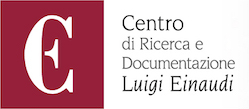Abstract
A due anni di distanza dai massimi storici toccati dalle Borse mondiali, dopo gli attentati dell’11 settembre, il quadro macroeconomico globale è perturbato. Si tratta forse di una inevitabile fase di trasformazione dopo la crescita impetuosa degli anni passati. I sistemi economici occidentali hanno probabilmente accumulato sufficienti risorse per avere una pausa di riflessione, per ripulire i bilanci pubblici e privati, per rivedere i criteri di scelta degli investimenti, per dare una nuova dimensione alle considerazioni etiche, alla regolamentazione e alla trasparenza. È quindi appropriato porsi domande anche sul funzionamento dei mercati finanziari, per individuare se esistano dei problemi da risolvere, per chiedersi se tutto vada bene o sia invece il caso di ripensare i canali di scelta delle attività finanziarie. Questo lavoro, nato nell’ambito del XIX Rapporto Bnl/Centro Einaudi sul risparmio e sui risparmiatori in Italia, cerca di meditare sugli aspetti sostanziali del rischio dei portafogli detenuti dalle famiglie italiane, per la cui misurazione corretta molta strada rimane ancora da fare. L’autore conclude che ogni miglioramento, pur possibile, non modifica il messaggio di fondo: il calcolo del rischio correntemente effettuato è più che altro una convenzione che non è in grado di dare vere risposte alle attese degli investitori.

Two years ago, the world’s stock exchanges reached record peaks. Today, in the wake of the terrorist attacks of September 11, the global macroeconomic picture is unsettled in what is, arguably, an inevitable phase of transformation after the rapid growth of previous past years. Western economic systems have probably accumulated enough resources to pause for reflection, clean public and private accounts, review investment choice criteria, and add a new dimension to ethical considerations, regulation and transparency. It is thus appropriate to raise questions about the funding of financial markets, to establish whether there are problems to be solved and to ask whether everything is proceeding satisfactorily or whether the channels for the choice of financial activities are in need of a rethink. This study, part of the 19th Bnl/Centro Einaudi Report on savings and investors in Italy, explores the substantial risk factors for the portfolios of Italian families, the proper measurement of which still has to be fully perfected. The author concludes that, albeit possible, improvement would in no way alter the underlying message: namely, that risk calculation as it stands at present is more than anything else a convention incapable of offering real responses to investors’ expectations.

![]()






